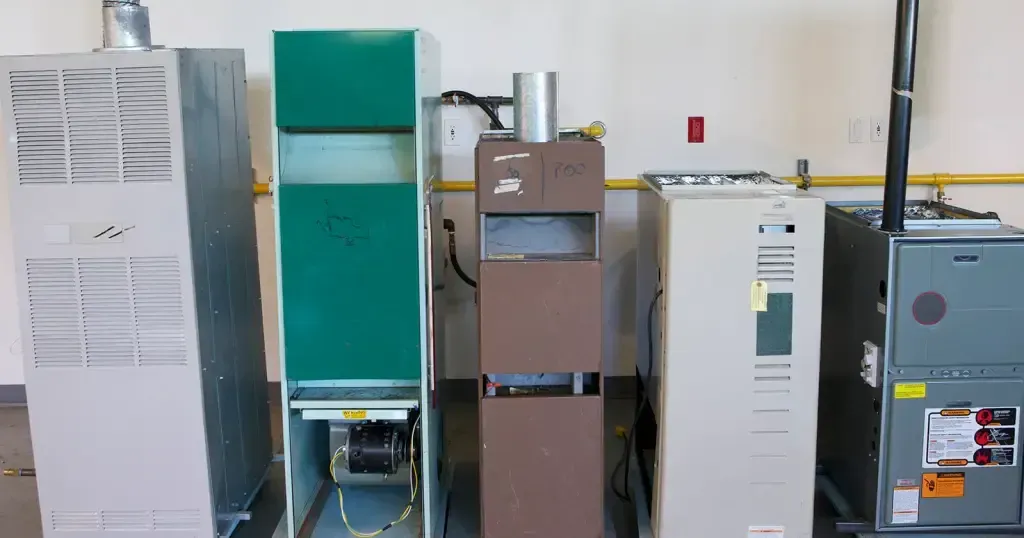Blog Archive

How To Find Out The Age Of My Furnace?
If you read my previous post When Is the Right Time to Replace Your Furnace? then you know that the average lifespan of a furnace is 15-20 years.
Although there’s no way to be certain when it’ll meet its end, knowing when it’s nearing the end of it’s lifespan will help you stay alert for the warning signs I covered in my previous post.
Knowing the age of your furnace will allow you to set aside a contingency for those unexpected repair or / replacements costs that will inevitably come up.
Determining the age of your furnace can be a difficult process, so I’ve put together this post as your guide to find the answer to that very question.
Where do I start?
If you can find the furnace’s serial number, you’ll be able to decipher it. The serial number could be in a variety of different locations that would not be obvious to a person who doesn’t know what they’re looking for.
Decipher it to determine the week/month and year of production.
If a paper or metal tag/sticker around the outside of the furnace isn’t immediately apparent, how about a stamped imprint in the sheet metal?
If there nothing’s there then it’s time to dig a little deeper and remove the cabinet door to see if anything is marked inside the furnace.
Notice anything?
Older furnaces may have the serial numbers marked or stamped on one of the many parts. Check various panels, the gas valve, fan or fan blades, the blower motor, etc. Ensure you shut off the power to the furnace beforehand.
If you’re not comfortable with the above perhaps it’s better left to a qualified HVAC technician. With years of experience, they’ve likely come across a number of different manufacturers, models, and production dates. They’ve seen so many they can tell you more about your unit just from looking at it.
What do you do when you find the serial number? How do you decipher it?
The serial number will rarely state the production month and year clearly.
However, there are a few ways to decipher the serial number to extract the production date.
Method 1, is to contact the manufacturer and request the information. Provide a photo of the unit and if you’ve located it; the serial number.
Method 2, is to search for the information through online resources. A website like Building Information Center (Click Here) has already done the hard work by compiling all the details from a multitude of manufacturers in one place for us to access.
Method 3, is attempting to decipher the serial number yourself
The various numbers and letters contained in the serial number will vary by manufacturer and from year to year, but most will include information on the week/month and year of production.
Here are a few different combinations you can try:
The first four digits of the serial number include the week/month and year.
For example, 2398 likely means it was manufactured in the 23rd week of 1998.
The first four digits of the serial number include the year and week/month.
For example, 0212, likely means it was manufactured in 2002, in the 12th week or 12th month (December).
The last four digits of the serial number indicate the week/month and year of production. The format could be similar to 1 or 2 above. This is less common.
The serial number may be alphanumeric where both numbers and letters are used in combination to indicate month or year rather than strictly just numbers.
For example, 02B, likely means it was manufactured in 2002, and B, the second letter of the alphabet likely means it was manufactured in February, the second month of the year.
The serial number begins with a letter rather than a number which may represent the origin. For example, factory or location. The date of production would then follow.
Here are some examples putting the above combinations into context:

Wrapping up…
This guide gives you three methods to determine your furnace’s age.
You may have recently purchased a home or investment property with an existing furnace.
OR
You may simply not know much about the furnace in your current home and what to learn more.
In either circumstance, you’ll be better prepared for the always untimely, but ultimately necessary repair or replacements costs that come with homeownership.
As always speak to a qualified HVAC technician to determine what makes the most sense for your unique situation. Unfortunately, there is no one size fits all answer.
What Are Our Client Saying About Us?
OUR TESTIMONIALS

